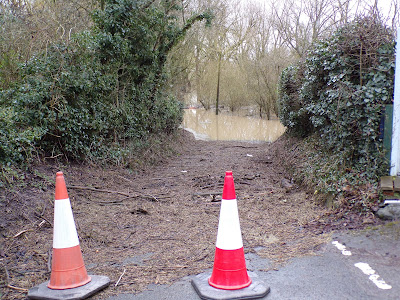Read on for my thoughts about growing your own and saving money! Bit of nature and environmental stuff too! Now with a list of local markets in the Links section!
Thursday 18 February 2021
Hazel tree trim
Wednesday 10 February 2021
Winter in the Allotment
There's been quite a bit of snow this winter and it has been frequently cold. Whilst it can be inconvenient at times, and the ground is frozen, I do believe that the allotment and indeed the nature of these isles needs the cold in winter in order to keep the natural world in balance. A warm winter leads to an explosion in the more destructive insect life, too wet a winter leads to crop failure and delayed start to planting in the Spring and unexpected warmth can confuse hibernating animals and insect life leading to them being vulnerable without sufficient food or reserves or when the weather changes back.
Saturday 6 February 2021
Cycle ride, lichen and an old way marker
With the forecast for the weekend being for rain and then snow and the weather over the past few days not having been great, I decided to take the chance with a little bit of sunshine yesterday afternoon to go for a short cycle ride into the countryside.
I've been reading up on lichen recently and it is amazing how many different species there are here in the UK! Looks like there's a lot to learn and some close up photography required
Friday 5 February 2021
Snow
This winter has been often very wet with flooding in places but there has also been some frost and snow. Snow isn't to everyone's liking and here in the UK our transportation networks are - despite what I assume is decades of experience - hopeless at dealing with it. However, I am very much in favour of the seasons happening in the correct place and time, two years ago the temperature reached 20 degrees celsius on one day in February which really isn't normal! The study of phenology has a long history here in the UK with records going back centuries in some cases, observations such as the first appearance of flowers, of blossom, of the first swallow among many other things. Spring has been getting earlier due to climate change and in general the weather has been getting more chaotic, and milder winters are often the norm nowadays.
So, to me, having a "proper" winter is reassuring. Knowing that the frost breaks up the soil into a tilth, that it sweetens the parsnips, that the many plants and bulbs that need the cold as part of their life cycle get what they need. Too harsh a winter can of course reduce populations of birds and other species but we humans can help with that by supplementary feeding and land management such that food is available for them when they need it.
Tuesday 2 February 2021
Not yet Spring!
I've not been writing much on the main part of the blog just recently as I have been concentrating on the list of Markets in Yorkshire and Lancashire which you can find here. However, despite the cold, snow, frost and rain, we've managed to get to the allotment a few times to dig over and tidy, although the ground has been either too frozen or too mushy to get much done on many occasions.
Likewise, getting out for exercise in this latest lockdown has often been difficult due to the weather and the River Wharfe and Ouse and various feeder streams have been flooding into field and over roads. The edge of a bridge on the road near Bolton Percy (from Tadcaster) looks like it had collapsed into the water when I cycled down there last Friday.
















